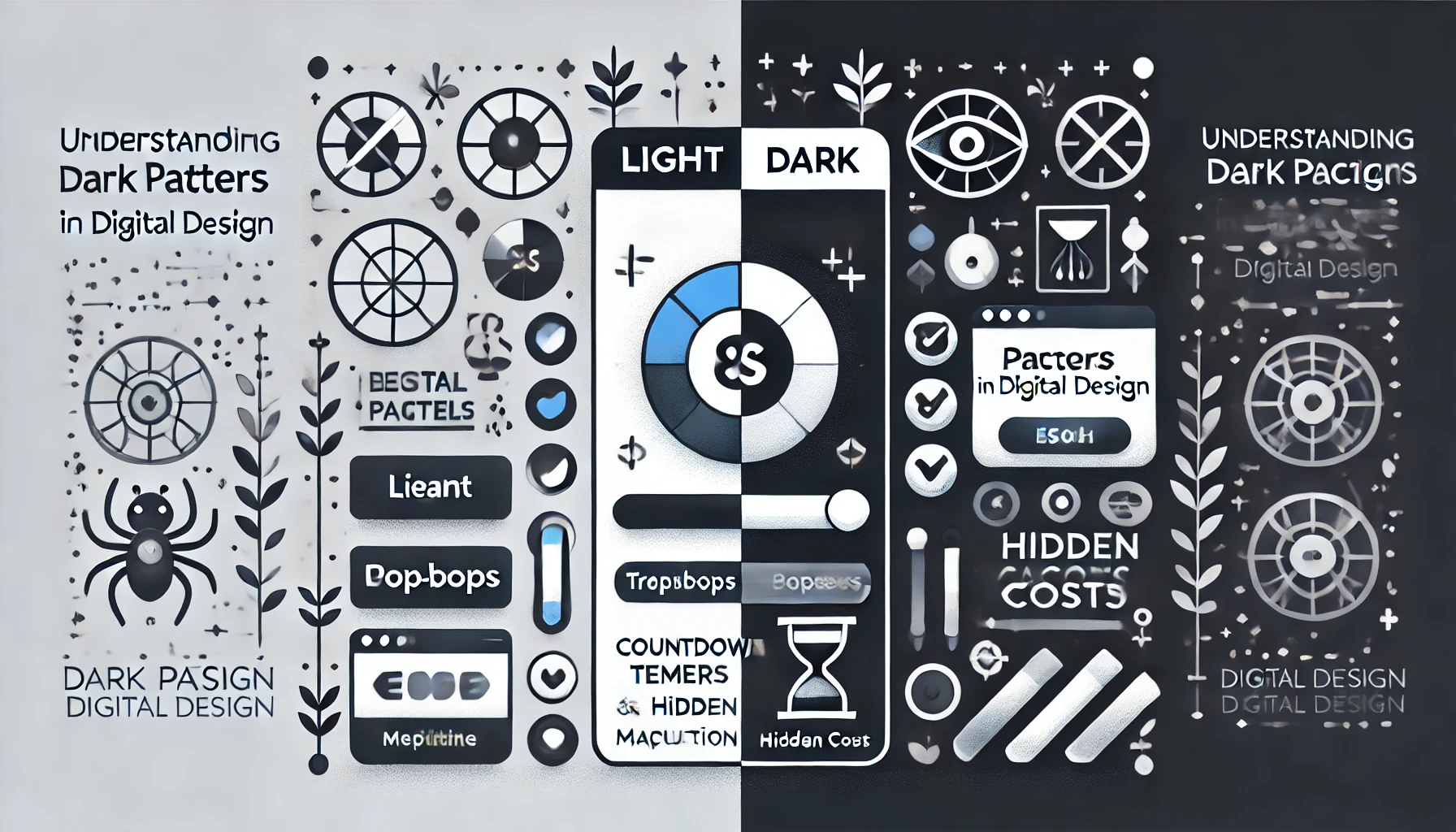Understanding Dark Patterns in Digital Design
 Muhammed Kılıç
Muhammed Kılıç
Endorsements (aka "Social Proof")
False Activity Messages: Sites falsely claim high user activity or interest in a product to create urgency.
Deceptive Consumer Testimonials: Using fake endorsements or presenting testimonials without disclosing material information.
Deceptive Celebrity Endorsements: Falsely attributing testimonials to celebrities.
Parasocial Relationship Pressure: Leveraging trusted characters, especially those familiar to children, to influence choices.
Scarcity
False Low Stock Message: Misleading users by indicating low stock to prompt immediate purchases.
False High Demand Message: Creating a false sense of urgency by claiming high demand.
Urgency
Baseless Countdown Timer: Displaying a fake countdown clock to pressure immediate purchases.
False Limited Time Message: Suggesting offers are time-limited when they are not.
False Discount Claims: Advertising fake discounts or sales to lure consumers.
Obstruction
Price Comparison Prevention: Making it difficult for shoppers to compare prices by bundling items or using inconsistent measures.
Roadblocks to Cancellation: Designing processes that make it easy to sign up but challenging to cancel.
Immortal Accounts: Making it hard or impossible to delete an account.
Sneaking or Information Hiding
Sneak-into-Basket: Automatically adding items to the shopping cart without the user’s consent.
Hidden Information: Withholding essential information or significant product limitations.
Hidden Costs: Adding fees or charges that are not initially disclosed.
Drip Pricing: Advertising a partial price and adding mandatory charges later in the buying process.
Hidden Subscription or Forced Continuity: Offering a free trial that transitions into a paid subscription without clear consent.
Interface Interference
Misdirection: Designing elements to focus user attention away from critical information.
False Hierarchy or Pressured Upselling: Using visual prominence to nudge users toward specific choices.
Disguised Ads: Making advertisements look like unbiased product reviews or independent articles.
Bait and Switch: Leading users to expect one outcome but delivering another.
Coerced Action
Unauthorized Transactions: Tricking users into paying for goods or services they didn’t intend to buy.
Auto-Play: Automatically playing additional videos in a disruptive or harmful manner.
Nagging: Repeatedly and disruptively asking users to take an action.
Forced Registration or Enrollment: Requiring account creation or information sharing to complete a task.
Pay-to-Play or Grinding: Advertising free access but then charging for full functionality.
Friend Spam, Social Pyramid Schemes, and Address Book Leeching: Misusing email addresses or social media permissions for unintended purposes.
Asymmetric Choice
Trick Questions: Using confusing language to steer users towards unwanted actions.
Confirm Shaming: Shaming users into making certain choices by framing alternatives negatively.
Preselection: Preselecting options that benefit the company but not the user.
Subverting Privacy Preferences: Tricking users into sharing more information than intended.
Source: https://www.ftc.gov/reports/bringing-dark-patterns-light
Subscribe to my newsletter
Read articles from Muhammed Kılıç directly inside your inbox. Subscribe to the newsletter, and don't miss out.
Written by

Muhammed Kılıç
Muhammed Kılıç
Hello, Muhammed here and I am a software engineer with a passion for discovering and trying out new softwares, startups and projects. As a self-proclaimed product enthusiast, I am always on the lookout for the latest and greatest products on the market.